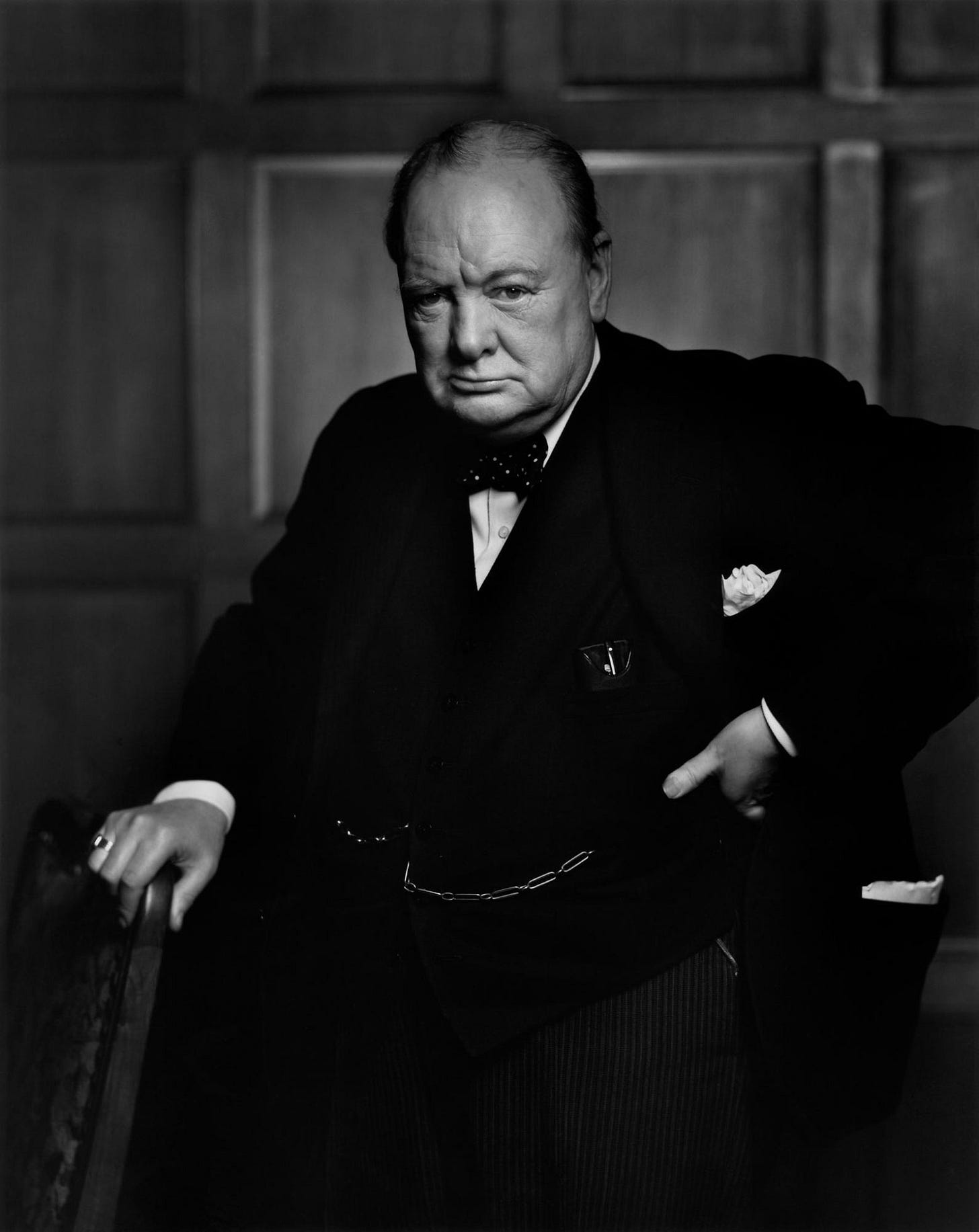We remember Winston Churchill from his 1941 portrait by Yousuf Karsh an old man, irascible, indomitable.
© 1941 by the Estate of Yousuf Karsh.
Before that, however, he was an impatient young subaltern who used influence to get seconded to the war in the Sudan.
There, he rode with the 21st Lancers in the Battle of Omdurman in what was to be the last cavalry charge of the British Empire, on September 2, 1898.
Riderless horses galloped across the plain. Men, clinging to their saddles, lurched helplessly about, covered with blood from perhaps a dozen wounds. Horses, streaming from tremendous gashes, limped and staggered with their riders. In 120 seconds five officers, 65 men, and 119 horses out of fewer than 400 had been killed or wounded.
Winston S. Churchill, The River War, 1899
But before he could join the fray, there was other work to be done.
It often happens that in prosperous public enterprises the applause of the nation and the rewards of the sovereign are bestowed on those whose offices are splendid and whose duties have been dramatic. Others whose labours were no less difficult, responsible, and vital to success are unnoticed. If this be true of men, it is also true of things. In a tale of war the reader's mind is filled with the fighting. The battle--with its vivid scenes, its moving incidents, its plain and tremendous results--excites imagination and commands attention. The eye is fixed on the fighting brigades as they move amid the smoke; on the swarming figures of the enemy; on the General, serene and determined, mounted in the middle of his Staff. The long trailing line of communications is unnoticed. The fierce glory that plays on red, triumphant bayonets dazzles the observer; nor does he care to look behind to where, along a thousand miles of rail, road, and river, the convoys are crawling to the front in uninterrupted succession. Victory is the beautiful, bright-coloured flower. Transport is the stem.
Id.
It took two years to complete a military railroad that the experts, civilian and military, pronounced as impossible to construct in the desert conditions. However, Churchill remarked, when it was completed
Though the battle was not yet fought, the victory was won.
Id.
My charge, delayed by my railway
I am now engaged in a project of political reconstruction of the United States into new nation-states that can be expected to have a degree of political cohesiveness that the United States of America has lost. In analyzing Cumberland, to be assembled from the Ohio River Basin, Michigan and most of the Appalachians, its 533 counties had a MAGA over Democratic margin of over 8 percent. I’ve been analyzing factors, such as population, age structure, voting participation, land-use density, distance to nearest county with a mid-size city population 250,000 or more, education and other factors.
As usual, the place to start is with the unreasonably effective method of ordinary least squares linear regression. A successful test will tell what proportion of variance can be accounted for by a given combination of variables. But pitfalls await the unwary. The usefulness of the method depends on assumptions that too often go ignored. Once a promising r-squared is found, users have little appetite to inquire further. There are nasty terms like heteroskedasticity and mysterious entities such as Cook’s distance to be confronted. Fortunately, there is a useful set of disagnostic plots, like this one.
Just one small difficulty. There were not available in my preferred language, Julia, which is a great general-purpose scientific computing language but a little light in the loafers in the statistics department.
Well, they say that nothing is impossible for the man who doesn’t have to do it all himself. So, with the help of my useful buddy Claude, I ginned up a version of the function from the R Programming Language, which has been doing this since the last century. Any gearheads can survey the code on the repo.





Yousef Karsh had some kind of connection to Boston’s Brigham & Women’s Hospital (I forget what the connection was), and there are several of his large-format photos, including the Winston Churchill, in the library adjacent to the Family Center there. Seeing ol’ Winston there, 1.5 times life size, staring down at you is quite the experience.
Ai-generated code is known to be buggy, at least sometimes, so I assume you'll compare your Julia results to R results given the same data? Be very interesting to see if you get identical results.
Back when I was still working, a manager I knew tried to get me interested in R (because he was getting into it), but stats were never my thing. But it has sort of remained on the edge of my radar because of my interest in baseball stats. Python is also, as you say, "light in the loafers" when it comes to serious stats. (But I wonder if there isn't a Python package for stats or that can leverage an R install. Or, given how popular Python has become, both.)